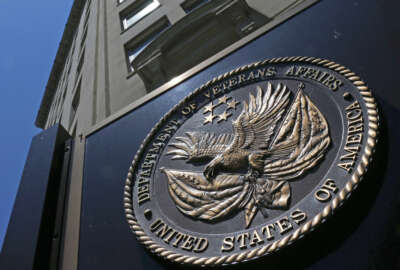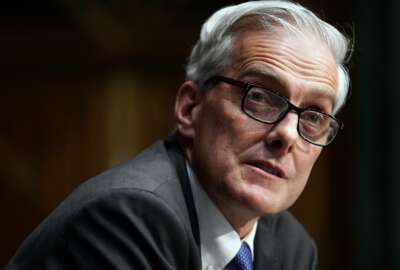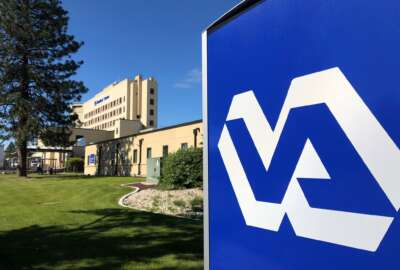

The Veterans Health Administration, eager to hire more in-demand health care workers, is accelerating the process of bringing prospective hires onboard.
The Veterans Health Administration, eager to hire more in-demand health care workers, is accelerating the process of bringing prospective hires on board.
The VHA, through a national onboarding surge event last week, completed all the onboarding steps for more than 12,800 new employees — nearly double its goal.
Undersecretary for Health Shereef Elnahal said in an interview it will take several additional months for VHA to get a final headcount of how many prospective employees will accept a final job offer from the agency.
“My first priority is to hire faster and more competitively, because I know we need many more of those people. The more folks we have to be able to execute the mission, the more veterans we will be able to serve in a shorter time. And that means everything as we prepare for the historic expansion of benefits that the president signed into law this past August,” Elnahal said in a Nov. 23 interview.
The agency is looking to bring on more health care workers in anticipation of a major expansion of VA health care under the PACT Act. The VA begins to adjudicate those health care and benefits claims at the start of the New Year.
“Veterans, at the end of the day, need the full complement of staff in every facility and medical center that we have, and this effort was designed primarily to be able to inject so many more people into every site of care that we have,” Elnahal said.
Many of the applicants who received preliminary offers from VHA and went through the all-hands-on-deck onboarding initiative also received several competing job offers from private health care providers.
“We expect and hope that the vast majority of them will accept employment, but we won’t know until they ultimately accept a start date, and come in,” Elnahal said in an interview Wednesday. “Oftentimes, people can be weighing job offers even up to the last day, so we won’t know until the coming months, especially as the holidays are before us.”
By taking a “one-stop-shop” approach to complete all the onboarding steps at once during the surge event, VHA expects to minimize the dropoff in prospective hires that don’t accept final job offers.
The VHA onboarded a broad swath of employees, many of them meant to fill vacancies for human resources experts, front-line clinicians and positions that support clinical work.
“We need to hire the hirers, to be able to bring on key folks in the field who are in front of veterans,” Elnahal said. “Really, it ends up being quite a long list of folks we need, because of how every health care system, frankly, is struggling for people.”
Elnahal said VHA’s average time-to-hire is currently about 200 days, from the time a vacancy occurs. The agency spends about half that time interviewing candidates and assessing their qualifications before making a preliminary offer. The rest of the time is focused on onboarding steps — which include fingerprinting, background checks and drug tests — before a candidate actually starts work at the VHA.
“Unfortunately, it takes us significantly longer than our competitors in that onboarding stage. We really need to do our best to reduce that timeframe, to more efficiently bring folks in for those steps,” Elnahal said.
VHA expected the national onboarding surge would result in the agency completing the onboarding steps for about 6,500 prospective employees across the country, and nearly doubled its goal.
Elnahal said many prospective employees that went through the onboarding event have wanted to serve veterans for years, but had difficulty entering the VA system.
“We’re really trying to break those barriers as much as possible,” he said.
The nationwide onboarding surge fast-tracked candidates’ onboarding experiences by coordinating all required pre-employment actions into a single-day event at facilities across the country.
“A lot of those activities depend on facilities affording the time and resources to get folks in. So what we said, as much as possible, if you as a facility and a network could get events in place to offer a one-stop shop for prospective employees to come in and get as many of those steps done at once, we’d be able to expedite this. And we proved it to be true in just a few short weeks,” Elnahal said.
Elnahal said the onboarding event improved the relationship between network-level human resources specialists, many of whom work virtually, with facility-level medical center leadership and hiring officials.
“In many cases, people were meeting each other for the first time, as a result of this event,” he said. “A lot of lessons learned surfaced from this onboarding surge event that allowed us to shine a light in every single network of our country on exactly what we need to focus on more definitively in the medium to long term.”
Elnahal said the onboarding event also highlighted some of the bottlenecks in the standard onboarding process.
“Ideally, we want to get to a stage where we don’t need these types of surge events, because we’re able to identify and hire folks efficiently,” Elnahal said. “Part of the problem is that we don’t have a standard implemented process for hiring that looks the same in every single network, and so this allows us to move towards standardization in a much faster way.”
Among the opportunities to standardize hiring and onboarding, Elnahal said VHA is looking to reduce the number of “hand-offs” that occur throughout the process.
“Every time you introduce a handoff to a process, there’s a risk that things fall through the cracks. What we need to do is, as we establish these standardized processes, minimize the number of times and instances where people have to hand off to somebody else in HR” Elnahal said. “At the very least, somebody should have awareness on the HR team about where these packages are and who has the ball next, if you will, to advance it.”
The PACT Act gave the VA several tools, including new pay and bonus authority, to hire more quickly and more competitively.
“Right now, it’s on us to be able to consistently implement the use of those authorities in every single network in VHA, and that’s what we’re really focused on in the coming months,” Elnahal said.
Beyond onboarding, Elnahal said the PACT Act gives VHA the tools it needs to prioritize the retention of health care workers.
“It’s really not just money that keeps people in your system. In fact, it’s having a supportive work environment around our employees that really does the trick in retention. I really do think retention will be the differentiating factor for health care systems into the future about whether they’re able to be successful,” he said.
While VHA is busy implementing the PACT Act, the VA, as part of its fiscal 2023 budget request, is calling on Congress to approve higher pay caps for VA physicians, podiatrists and dentists.
Elnahal said VHA is seeking to not just raise salaries, but provide financial incentives “that are more creative and help incentivize both quality patient safety and productivity.”
“A lot of folks in Congress have reached out to us and said that they’re supportive. We really hope to be able to get that through, so that we can make sure, especially in rural areas, that we’re able to compete for clinicians that are being paid a lot to be able to move to those areas and meet the care demand. We really want to be there for our rural veterans. But we think that pay competitiveness is an issue across the country, including in our urban areas, that will be a major valve in opening the capacity we need for veterans,” he said.
The VHA is launching PACT Act awareness week on Dec. 10, with events in all 50 states, focused on getting veterans to apply for benefits, understand their eligibility and undergo a toxic exposure screening. The agency so far has completed more than 250,000 veteran screenings over the past few weeks.
Copyright © 2024 Federal News Network. All rights reserved. This website is not intended for users located within the European Economic Area.
Jory Heckman is a reporter at Federal News Network covering U.S. Postal Service, IRS, big data and technology issues.
Follow @jheckmanWFED



